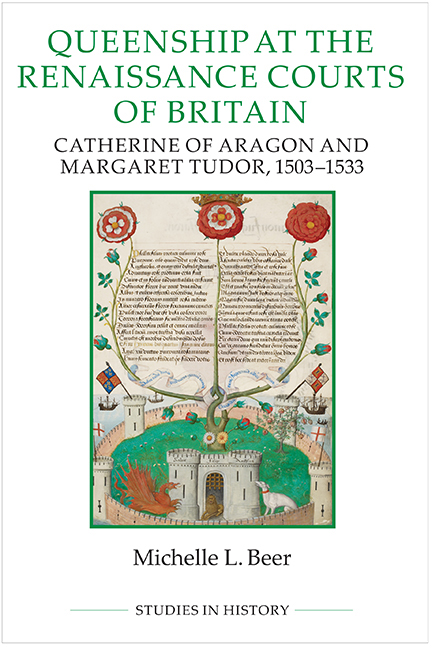Book contents
5 - Queenship and pre-Reformation piety
Published online by Cambridge University Press: 24 October 2019
Summary
‘the said Quene [Margaret] remayned in the said Towne of York. At Ten of the Clok that Day she was conveyed to the Church, with the sayd Archbyschop, the Byschops of Durham, Morrey, aud Norrwysche, the Prelates before mentioned, and other honourable Folks of the Churche, my Lord of Surrey, the Lord hyr Chammerlayn, and other Nobles, Knyghts, Squyers and Gentylmen, and the said Mayre, Aldermen, and Scheryffes, to the Nomber of Two hundreth and more: With hyr wer Ladies and Gentylwomen of hyr Company, and Straungers, to the Nombre of xl. And so was shee conveyed to the Church. It was a fair Syght for to see the Company so richly apoynted’.
According to the herald John Young's account, when Margaret Tudor attended mass in the city of York, she did so in full view of over two hundred people, including members of her household, local prelates and governors, and a throng of curious onlookers. Young's account shows that this was only one in a series of pious practices that Margaret observed as she and her entourage journeyed to Scotland in 1503. When she entered the town of Tuxford, for example, the bishop of Moray offered her a cross to kiss, and at Hexham Margaret was greeted by the abbess and the nuns and again kissed a cross. Margaret's own entourage and common folk witnessed her observance of Christian rites when she entered a town, which demonstrated her piety before a wide audience. When Margaret heard mass at York, the Minster was completely full of ladies, gentlemen and townsfolk, all there to see the queen and to witness her piety. As the queen of Scotland and an English princess, Margaret was expected not only to be a devout and pious Christian but also to display this piety as a moral leader of her people.
Margaret's devotions on her wedding journey were part of an array of practices that made up her public piety in the early sixteenth century and, as queen, her honour and authority rested in part on her reputation as a devout Christian. Although some insight into Catherine's and Margaret's personal faith can be gained by examining their clerical patronage, reading habits and scant records of personal devotions, their public pious practices were more widely known to their people and closely associated with the office of queen.
- Type
- Chapter
- Information
- Queenship at the Renaissance Courts of BritainCatherine of Aragon and Margaret Tudor 1503–1533, pp. 122 - 148Publisher: Boydell & BrewerPrint publication year: 2018

